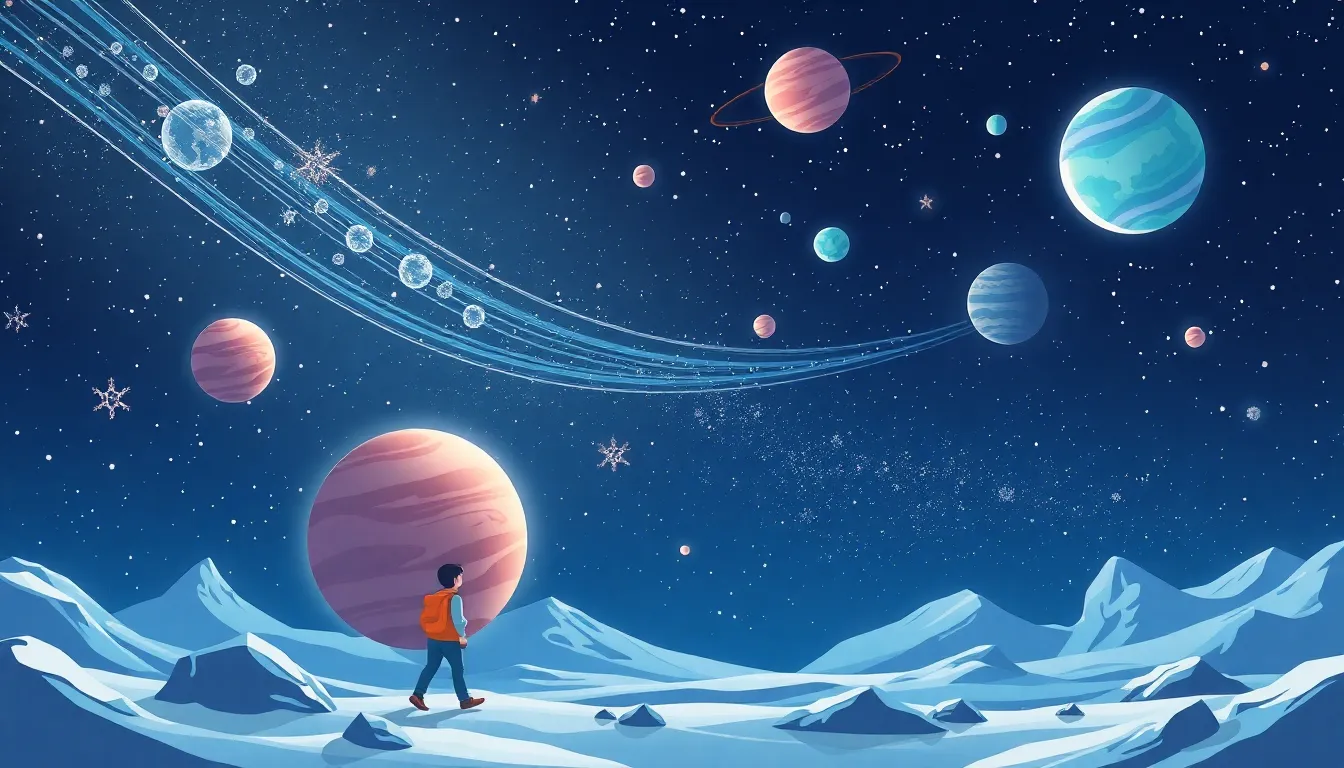
Exoplanets
What Is an Exoplanet?
An exoplanet is a planet that orbits a star outside our own Solar System.
Just like Earth goes around the Sun, exoplanets travel around other stars that can be far, far away.
Scientists think there may be billions of exoplanets in our galaxy alone!
How Do We Discover Them?
We cannot see most exoplanets directly because they are tiny and far away.
Instead, astronomers use clever tricks:
- Transit Method – When a planet passes in front of its star, the star’s light dims a tiny amount. By measuring this dip, scientists know a planet is there.
- Radial‑velocity Method – A planet’s gravity pulls on its star, making the star wobble. Sensitive instruments detect this wobble as a shift in the star’s light.
- Direct Imaging – In rare cases, a very bright planet can be photographed by blocking out the star’s glare.
These techniques let us learn a planet’s size, its orbit, and sometimes even clues about its atmosphere.
Different Kinds of Exoplanets
Exoplanets come in many shapes and sizes. Here are a few common types:
- Super‑earths – Bigger than Earth but smaller than Neptune. They may be rocky or have thick gases.
- Hot Jupiters – Giant planets like Jupiter that orbit very close to their star, making them extremely hot.
- Mini‑neptunes – Smaller than Neptune, often with thick gas layers and possibly oceans underneath.
- Earth‑like Planets – Roughly the same size as Earth and located in the “habitable zone,” where liquid water could exist.
Scientists are still learning how many of these worlds could support life.
Why Exoplanets Matter to Us
Studying exoplanets helps answer big questions:
- How Common Are Planets? – Finding many worlds shows that planets are a normal part of star formation.
- Is There Life Elsewhere? – By looking for Earth‑like planets, we can search for places where life might exist.
- What Is Our Place In The Universe? – Learning about other worlds expands our view of the cosmos and inspires new technology.
Every new exoplanet discovery adds a piece to the puzzle of the Universe, and one day we might even visit one of them—at least in our imaginations!